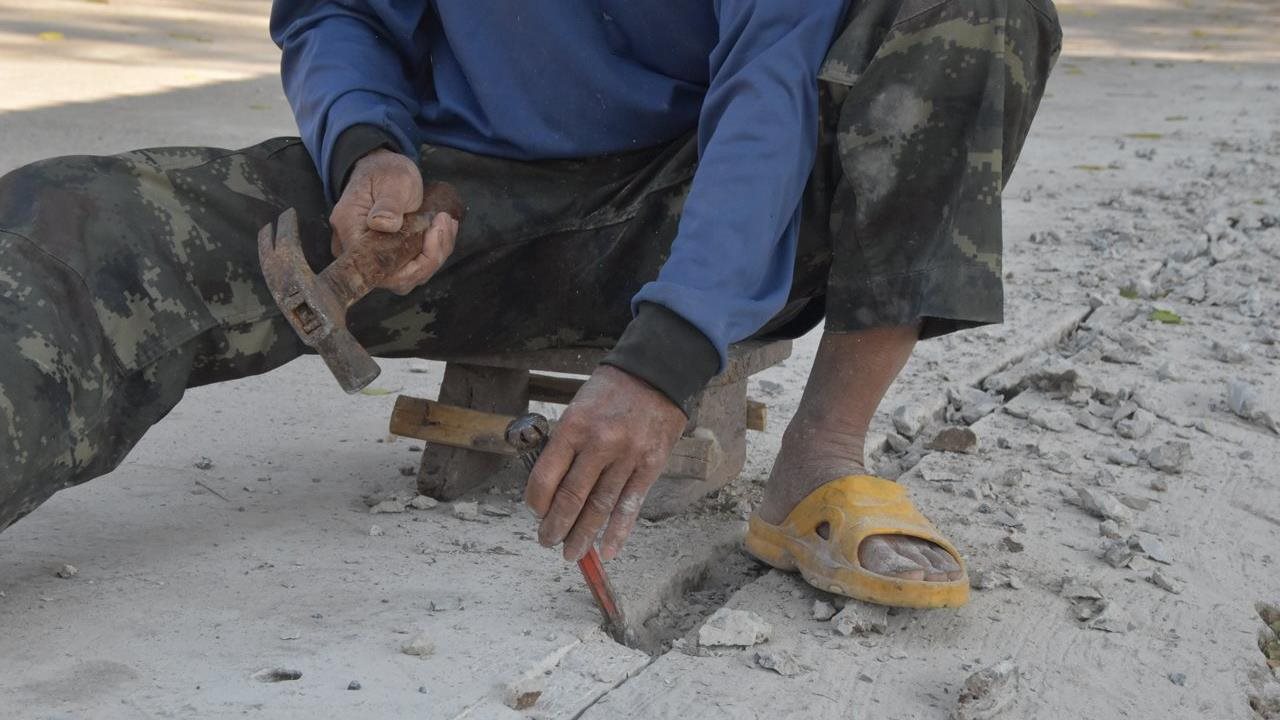
(BPT) – When it comes to concrete repair, the right tools make all the difference. Whether you’re a beginner or an experienced DIY-er, working with the essential materials will set your project up for success.
While there’s no need to keep an entire hardware store in your garage, there are a few key items to have on hand in case of emergency or when you need to make a quick fix. The experts at QUIKRETE put together this checklist of must-haves for your next (even if it’s undetermined at this time) DIY concrete repair project.
1. Chisel and hammer
The first step to repairing a crack or hole is to chisel out any debris or old concrete. To make sure the area is completely clear, you may need to use a chisel and hammer. This will help you inspect the area for any additional cracks or imperfections that may need to be addressed.
2. Wire brush
To make sure the crack or hole is free of any dust, dirt or gravel, you’ll want to use a wire brush over the area to be repaired several times. A smooth, clean surface will help the new mortar bond with the old material.
3. Concrete cleaner
The next step is to make sure the surface you’re repairing is completely clean. Use an outdoor cleaner to help remove any stains, mildew or grime from the area. The mortar you’ll use to patch the hole or crack is tinted to match the color of clean concrete.
4. Mixing pail
Although many concrete repair kits come in pre-mixed containers, it’s always helpful to have an extra mixing pail around for any additional mixing needs.
5. Ready-to-mix repair mortar
A multipurpose mortar can be used for many concrete repair projects. QUIKRETE® Zip and Mix – FastSet Repair MortarTM is a rapid-setting, high-strength repair material that works in a variety of areas. Its unique properties allow you to sculpt the material during application, which makes it ideal for repairing cracks, curbs, steps, pipes, retaining walls, septic tanks and any other vertical or overhead concrete surface. The material comes in a convenient three-pound mixing pouch that is easy to store in your garage or shed. Application is simple, and the curing process requires no extra steps.
6. Margin trowel
A trowel with a flat-nosed tip can help with so many types of concrete repairs, including helping you shape the concrete and work it into tight spaces and corners that can’t be reached by a larger, pointed trowel. You can also use it to mix mortar and scoop it out of your mixing container before you apply it to cracks or holes.
As a homeowner, it’s always best to be prepared for emergencies — especially cracks, leaks and holes. Having these six essential items on hand will help you stay on top of concrete repair projects and prevent future damage.
